
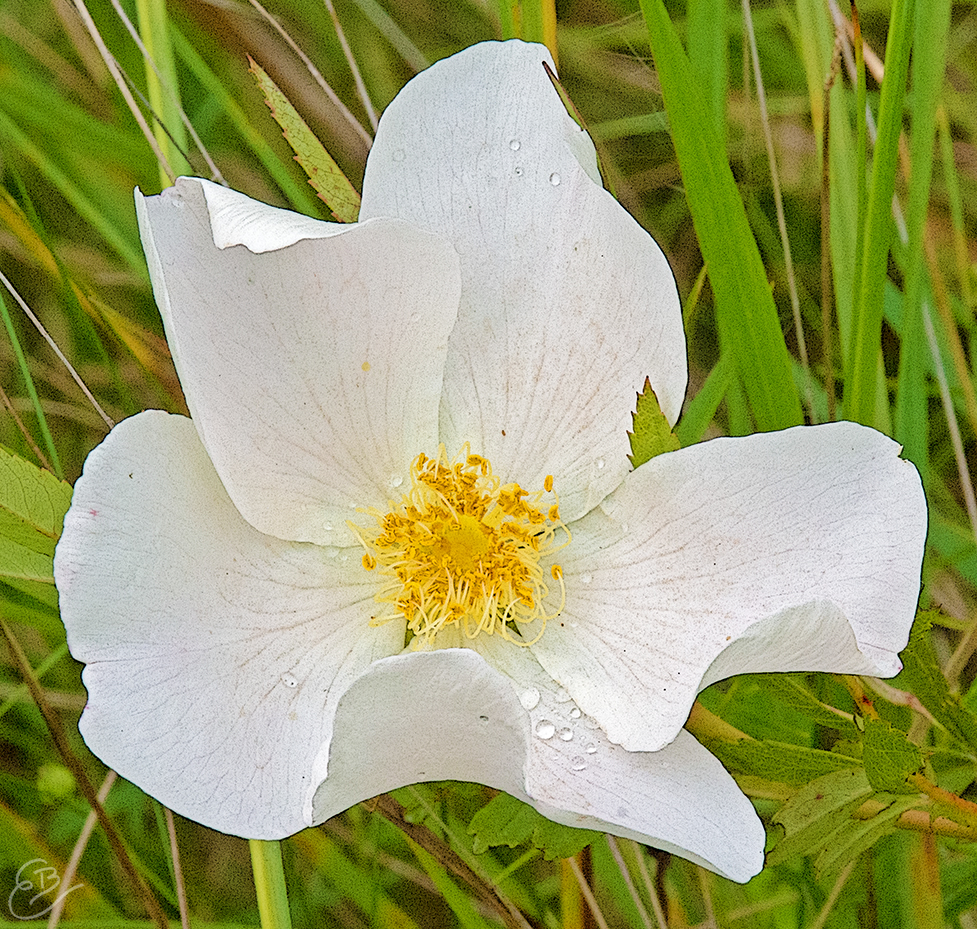
Cedar Prairie | Pocola, Oklahoma
Image by Ebenezer | 29 June 2019
A Rare Beauty
The White Prairie Rose
By Ebenezer Baldwin Bowles
17 July 2020
To converse, as it were, with nature,
to admire the wisdom and beauty of creation,
has ever been, and I hope ever will be,
to me a favourite pursuit. — Thomas Nuttall, 1819
An Act of Providence
There was only one — the White Prairie Rose, rare enough to fire the imagination of one of Arkansas' preeminent naturalists. The flower clung low to the Earth, snuggled amongst taller grasses and shrubs … this rare beauty, gracing with her delicate presence the remnant of tallgrass prairie. We were thrilled to see her.
From all over — from the highlands up north, the big city to the south, and nearby country homesteads — our little band came to the lowlands of the Arkansas River valley to find wildflowers, observe the state of the diminishing prairie, and enjoy a day of fellowship.
Finding the White Prairie Rose (Rosa foliolosa) was a happy surprise, an unexpected bonus, an act of providence — not a stroke of blind good luck. I oft see the Universe in THAT WAY — believing we are richly blessed by a merciful Creator so long as we keep our eyes open and our heart attuned to the mystery.
“It was really cool for me to see it,” our guide, ecologist Theo Witsell, said the next day from his office as Curator of the Arkansas Natural Heritage Commission Herbarium in Little Rock. “I've been looking for it for twenty years. I'm sure there are other prairie remnants down in that area where we might find a specimen. I'm sure we will turn-up more. It's just a matter of time and a matter of looking.”
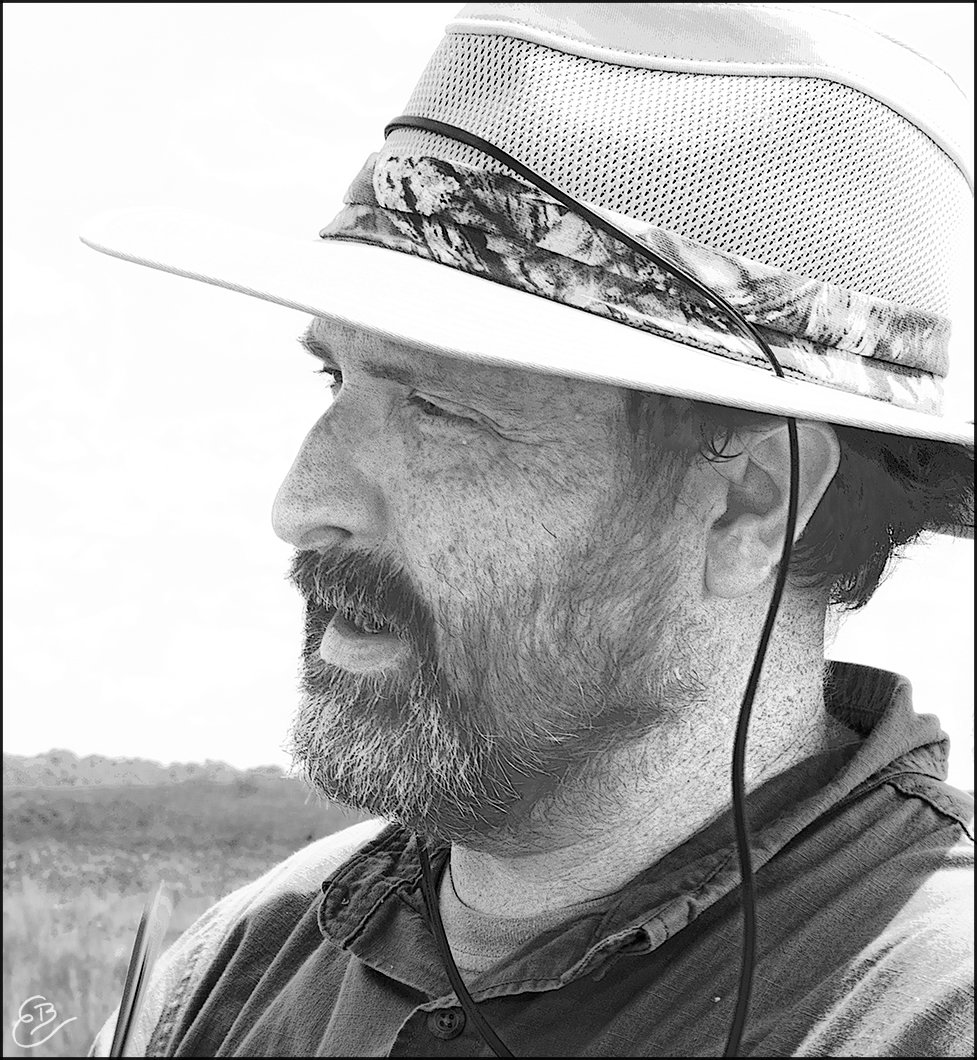
Theo Witsell | 29 June 2019
Belatedly Keeping a Promise
As for matters of time, a year has passed since that special afternoon when we all gathered round to admire a lonely specimen of the White Prairie Rose in her natural environment. I've forgotten much since then, but I'm keeping my promise — belatedly and with as much humility as I can muster — to tell the world about our good fortune.
Why I've waited so long I can't rightly know. Procrastination is not a good excuse. Perhaps I didn't feel up to the task. The more I study, the more these angiosperms remain a great puzzle. Wish it weren't so. I feel intimidated by knowledge I don't possess. But no longer and not tonight. I know this flower, the rare White Prairie Rose, and I'll tell you as much as I can about a species few have written about. “There's just not a whole lot of information about this flower,” Theo said. “For the most part, it has been missing in action in Arkansas.”
First, know that by an ironic twist of fate, our White Prairie Rose was not found in Arkansas. We visited four remnant tallgrass prairies that Saturday — three in the Natural State and one, the Cedar Prairie, about two miles west of the Arkansas-Oklahoma line. There in Oklahoma the White Prairie Rose lived. Technically, then, Arkansas was left out in the cold.
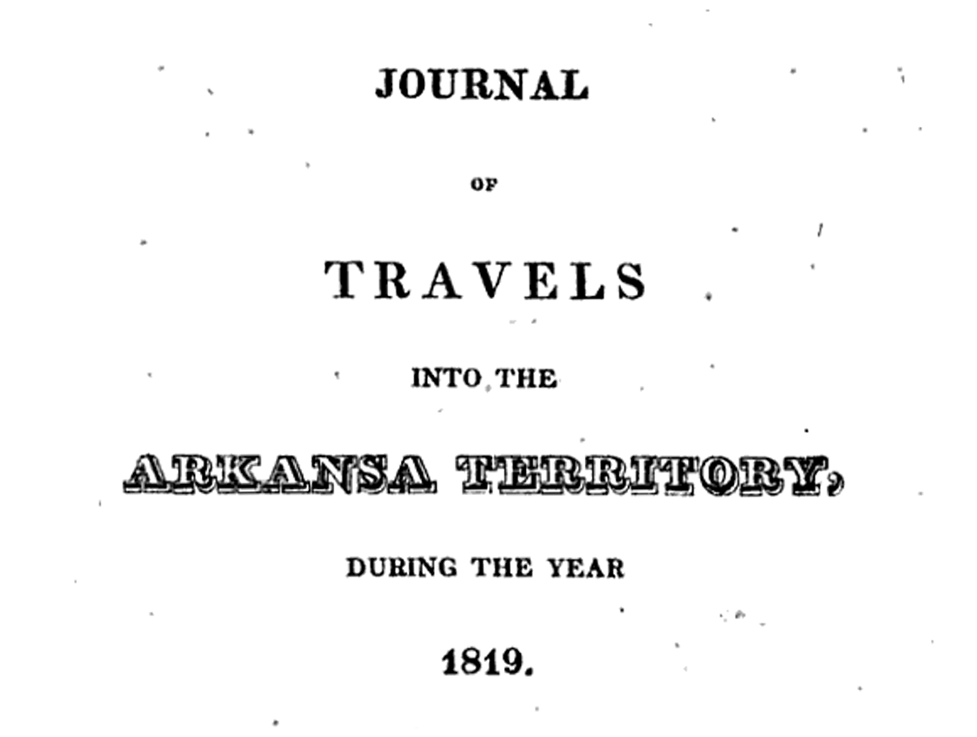
In Honor of Thomas Nuttall
Dr. Steve Patterson of Poteau, Oklahoma, a restoration ecologist, organized our day at the prairies in honor of the 200th-year anniversary of Thomas Nuttall's exploration of Arkansas. In addition to Cedar Prairie in Oklahoma, we visited Massard Prairie at Ben Geren Park in Fort Smith, Long Prairie in rural Sebastian County, and Cherokee Prairie near Booneville.
The first documented sighting of the White Prairie Rose in Arkansas came in 1853. The specimen resides at the Smithsonian in Washington D.C. The second discovery came in 1953 when collector Walter Lewis, an expert in native roses, found his Rosa foliolosa at Rich Mountain in the Arkansas Ouachitas. That specimen is held by the Missouri Botanical Garden in Saint Louis. A third specimen was collected in 2018 by John Moore of Fort Smith, but I can't tell you exactly where he found it — somewhere in Sebastian County south of Fort Smith and close to the Oklahoma line — or where it resides today.
There is a fourth specimen of special significance and some uncertainty, and whose existence fit nicely into our June 2019 prairie excursion. She was collected by Mr. Nuttall in 1819, but not documented in the explorer's Journal of Travels into the Arkansa Territory During the Year 1819. (Yes, he spelled it that way.) Mr. Nuttall's specimen is held by the New York Botanical Garden Herbarium in the Bronx. Theo tells us that the dogged explorer mentioned only a small fraction of the plants he saw and collected in his Journal, and that many specimens didn't even have names in 1819.
Raw, Uncharted Territory
We can't be certain, however, that Mr. Nuttall's Rosa foliolosa was collected on land presently situated in Arkansas. Mr. Nuttall (1786-1859) rambled some many miles west of the U.S. Army garrison at Fort Smith and may have found the flower there. Arkansas territory was raw and mostly uncharted at that time — and once Mr. Nuttall reached the little garrison at Fort Smith, he rambled away from the Arkansas River valley to explore land around Lee Creek in present day Arkansas and the Poteau and Verdigris Rivers in present day Oklahoma.
Further complicating the historical record is the fact, according to Elaine Nowick, author of Historical Common Names of Great Plains Plants (2015), that the Rosa foliolosa was known by the common name Leafy Rose from 1942 to 1986. For reasons I can't uncover, professional botanists decided to call our little beauty the White Prairie Rose beginning in 1986. What the professionals called it before 1942 I can only guess.
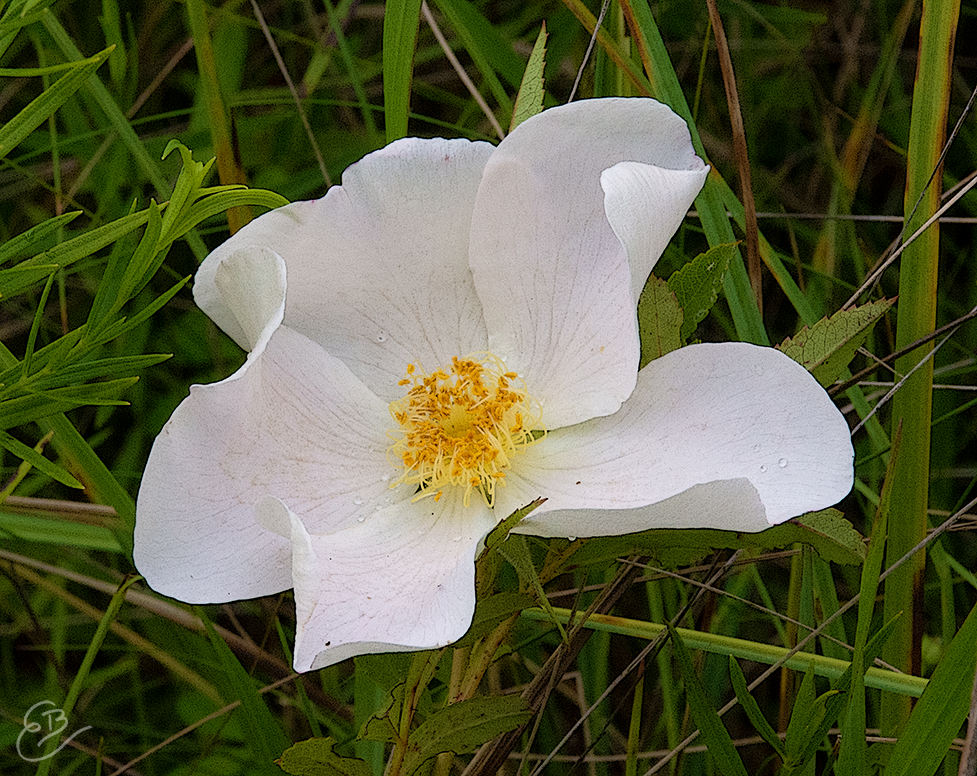
The White Prairie Rose | Pocola, Oklahoma
Image by Ebenezer | 29 June 2019
Looking for the Rosa arkansana
“I also found a reference to a plant called the Rosa arkansana,” Theo said. “We've been looking for that one, too. Funny, it's named arkansana and we don't have any records of it in Arkansas. It's called the Arkansas Rose or the Prairie Wild Rose.”
Rare flowers aside, the remnant prairie tour was a resounding success. “It was great fun,” Theo said. “Fantastic. Those prairies were just beautiful — excellent quality. That prairie we went to after we came back into Arkansas — Long Prairie — I was very enamored with that one. It had so many great, rare things that you don’t see very often anymore in any good numbers. It was wonderful.”
It was. Wonderful. I asked Theo if he had any last thoughts on the White Prairie Rose. “I want everybody to go look for it,” he said. “I want everyone to go to native prairies and open savannas and woodlands in the western part of the state. If they’re out and find it, tell me because I’m sure it is at other places just waiting to be found.”
EDITOR'S NOTE: To see the specimen held by the Smithsonian, click this sentence. To view an image of the specimen collected by Thomas Nuttall, follow this link to the New York Botanical Garden Herbarium.
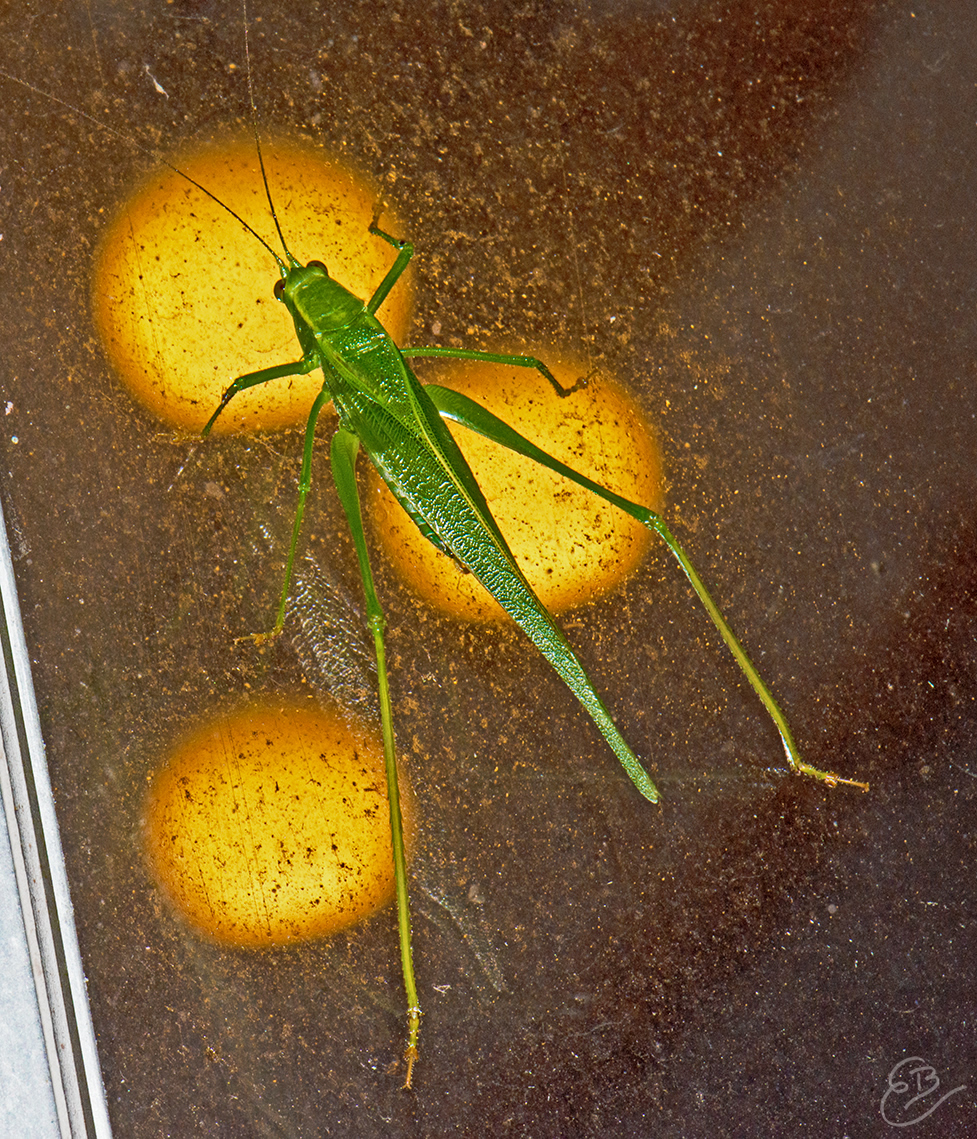
3 Dog Acres | rural Washington County, Arkansas
Image by Ebenezer | 25 July 2017
The Katydid from Texas
It's educated guesswork, but guesswork all the same: our green critter is the Texas Bush Katydid (Scudderia texensis) — that's our story and we're sticking to it. One of the experts at bugguide.net figured for sure this particular Katydid belongs to genus Scudderia, but drilling down to the species is problematic. Scudderia is a close-knit genus with more than a dozen species under its belt. “It is definitely an adult male in that genus, but to distinguish species you would need to look at the supra-anal plate, which is not visible in your photo,” entomologist Brandon Woo kindly wrote last week. Can't recall the last time we spied a supra-anal plate — and for now we're not looking. As for the three yellow globes beneath the critter, we have absolutely no idea, not being able to recall the circumstances of the capture. Mysterious but true. And compelling. I don't know about you, but these Katydids are a scary looking group of creatures. Said to be able to eat the sides out of apples. Sides?
Crytophyllus Concavus
WHEN midsummer’s tranquil evenings
Hush the notes of every bird,
Deep within the darkening forest,
Shrilly sweet, a cry is heard.
“Katy did!” “She did!” “She did n’t!”
Something calls from bush and tree,
Ah my heart! This pain confesses
Nature’s reference to thee.
For, screened round by gathering shadows,
Yestereve I sought the wood.
There quoth I, “Assertive insect,
Does Kate love me? If I could,
I would ask herself the question;
But my blushes silence bid.
Be my oracle!” For answer,
Came a mocking “Katy did.”
Chafing at this flippant fiat,
“Does she hate me then?” I cried.
Quick as thought, the taunting creature
“Katy did n’t!” thrice replied.
“Past is past. Unlock the present,
Jealous witch,” I called, heart-stirred.
So, the wicked woodland sybil
Would not say another word.
— Edward J. Stevenson
Life July–December 1883

Third Way, Lahore Parks,
Facial Expressions in China
Third Way, a District of Columbia think tank, reports that focus groups comprised of Black Americans in Detroit, Philadelphia, and Greensboro identified poor air quality, rising temperatures, and shifting seasons as indicators that the world's climate is changing. However, climate change ranked low in the overall picture. Participants cited health issues from air pollution and access to clean energy resources and jobs as paramount. Click here —›—› to read the full report.
The Lahore Parks and Horticulture Authority intends to create twelve urban forests in the provincial metropolis using the Japanese method Miyawaki, The News International reports. Miyawaki is a technique pioneered by Japanese botanist Akira Miyawaki that helps to build dense, native forests, especially in urban areas. The approach is supposed to ensure that plant growth is 10 times faster.
What's in a facial expression? A Chinese agency employing ‘big data’ analyzed the smiles and frowns of visitors to urban forest parks to determine their emotional reactions to the natural realm. Conclusion: female visitors showed positive facial expressions on selfies posted to social media, while male visitors mostly showed “careless expressions.” Mars and Venus? Click here —›—› to read the full report.


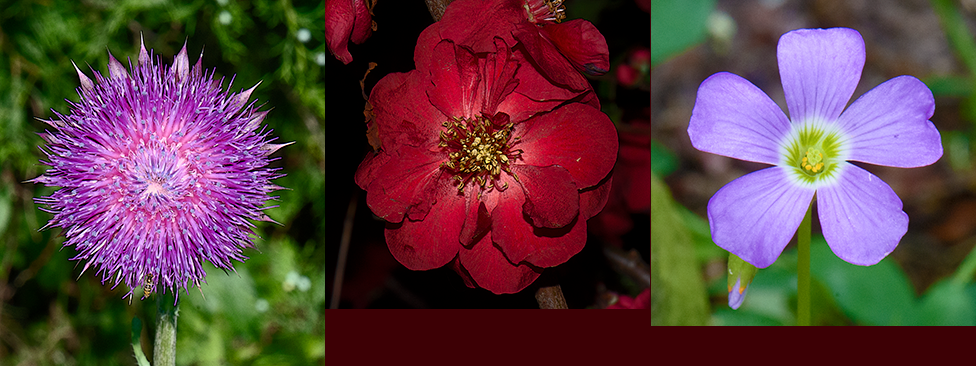
Thistle, Quince, Wood Sorrel
3 Dog Acres | Rural Washington County, Arkansas
Images by Ebenezer | 2019
Spiny and prickly to the touch, the Pink Milk Thistle is an attractive orb(Silybum marianum ) much enjoyed by pollinators. Blooming in early summer, the Milk Thistle stands tall on a thorny stalk that sways in the breeze. Our crop of thistles was outstanding this year with some specimens rising to seven-feet tall with a dozen or more colorful spheroid thistles on display. The flowering Quince (Chaenomeles japonica) goes by the cultivar name Scarlet Storm — and the hothouse name Japanese Quince. We love the dramatic, deep scarlet color accentuated with swirling golden stamens. As for the little flower, it's either the seed-bearer of the ornamental shamrock, or — more likely — the flower of the violet wood sorrel (Oxalis violacea L.). The leaves of both exhibit a similar trifoliate structure.

Sterling Minick Writes:
Great pics and writing as usual. Love the close-up shots! I didn’t know that there was a turtle rehab facility in the area. That’s good to know.
I’ve always had an affinity for turtles and especially tortoises, actually. Did you know that a group of tortoises is called a creep? It’s true, though I’ve yet to meet a single individual that fits that description ;). I find it rather odd that there is even a name to describe a group of tortoises, come-to-think-of-it, because these gentle reptilian wayfarers are almost always solitary wanderers.
Turtles and tortoises enjoy a fine life — well, that is, those whose homeland hasn’t yet been folded inside-out by that clever, yet most clueless of bipedal, hairless-apes.
These creatures, to me, epitomize patience. The popular cultural axiom, “patient as a saint,” I feel, could be further refined by replacing the word “saint” with the word “turtle.” By the nature of their biological makeup, these critters are never in a hurry … and they spend a loooooong time being that way.
Seems that in an evolutionary trade-off of sorts, these guys gained the comfort and protection of a permanently attached home at the expense of diminished speed and agility. Turtles and tortoises are peaceful, present-minded vagabonds who are never homeless. We humans could certainly learn a lot from them.
EDITOR'S NOTE: To read about the turtles, please click this sentence. And thanks, Sterling, for your thoughtful letter.
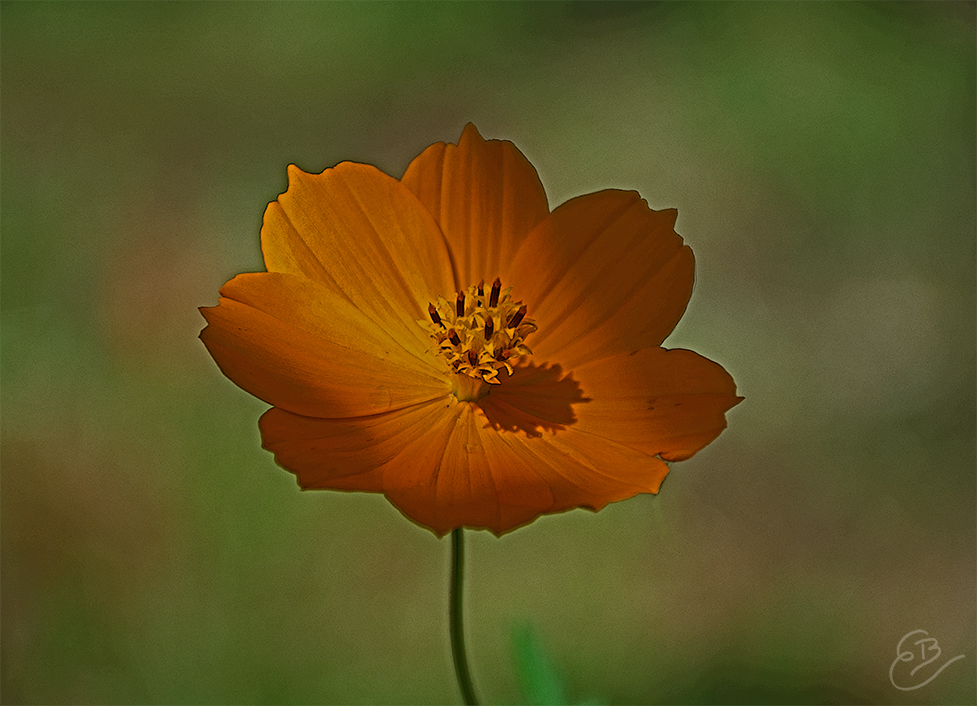
3 Dog Acres | rural Washington County, Arkansas
Image by Ebenezer | 17 September 2017
The Black Dahlia Is the Cosmos
“The great poem of nature embraces the whole Cosmos.” — Alexander von Humboldt 1868
She is truly beautiful, my sweet Cosmos — “I am in love with the flower,” Mrs. Shepherd exclaimed in 1895 — elegant, swirling like an imagined Milky Way, evocative of good order in a stable Universe. My flower.
Can we really see so much in a tiny flower? Yes. We can.
She rises up out of the Earth to stand against perceptions of chaos and entropy that seem to dominate discourse and engagement in our present age of fragmentation. Just look at her — the perfect antidote to the chasm dividing us. She is the Cosmos of harmony.
We can see what we want to see — shape, form, color. We dream of creating our own safe Cosmos.
Some say we are roaring into entropy — ninety miles an hour down a dead-end street — and that entropy is inevitable, that we deteriorate, silently, each and every day — that we are at least a million years from doom.
Maybe so, but I choose the Cosmos.
The Black Dahlia She Is Not
She came out of Mexico early in the nineteenth century and quickly caught the eye of innovative Uncle Sam gardeners, who never let go. They gave her the name Black Dahlia, even though.… Let us turn to long-gone Mr. L. Castle for an explanation.
“Like some other popular names, The Black Dahlia has the merit of simplicity, and but for the fact that the plant to which it is applied is not a Dahlia, and the flowers are not black, it would be as suitable a designation as any other.… Aliases in the plant world are generally indications of merit, and convey altogether a different impression to aliases borne by men and women; and if this be true, our little Cosmos has an additional recommendation in the fact that it has also other names besides those given above, such as Bidens atrosanguineus and Dahlia Zimapani, under which it is seen in several English gardens and nurseries.”
L. Castle's explanation was published in London in 1883 in a magazine with a stupendous name: The Journal of Horticulture, Cottage Gardener, and Home Farmer. A Chronicle of Country Pursuits and Country Life, Including Poultry, Pigeon, and Bee-Keeping. The magazine was “Conducted by Robert Hogg LL.D. F.L.S.” Long-winded title pages were all the rage in the nineteenth century. They're interesting dontcha think.

The Flower Wizard of California
From the very beginning of her arrival from Mexico, the Cosmos caught the imagination of botanists and horticulturists in the USA and eventually in England. Theodosia Burr Shepherd, the “Flower Wizard of California,” became the Cosmos' most influential early champion. She saw great potential in this little gem of a flower.
“I am doing a great deal with Cosmos; it is a flower with wonderful possibilities, and one that is very delightful to work with,” Mrs. Shepherd wrote in an 1895 edition of Meehan's Monthly: A Magazine of Horticulture, Botany and Kindred Subjects. “Cosmos is as full of freaks as the Chrysanthemum, and is destined to be as valuable, if not more so to florists, than the Queen of Autumn. I am in love with the flower.” NOTE: The Queen of Autumn is a Chrysanthemum. As for the “freaks,” we speculate Mrs. Shepherd was referring to highly unusual cultivars — some that arrive via their own free will.
The editor of Meehan's Monthly gave an enthusiastic “amen” to Mrs. Shepherd (1845-1906), a pace-setting pioneer floriculturist from rural Iowa who established one of the country's most innovative nurseries in Ventura, California. “As the Cosmos is closely related to Dahlia botanically, one may reasonably look for as much variation in one genus as the other,” editor Thomas Meehan wrote. “There is little doubt but that Mrs. Shepherd's pleasant visions of the Cosmos of the future will be abundantly realized.”
Mrs. Shepherd's admiration of the Cosmos and the mighty influence she exerted amongst the male-dominated field of horticulture — she was called the female Burbank — helped secure the plant's high rank in the galaxy of decorative flowers: Begonias, Coreopsis, Nasturtiums, Petunia, Poppies, and Morning Glories. In her Descriptive Catalogue of Flowers for 1900, the first flower listed is the Giant ‘Rainbow’ Cosmos.
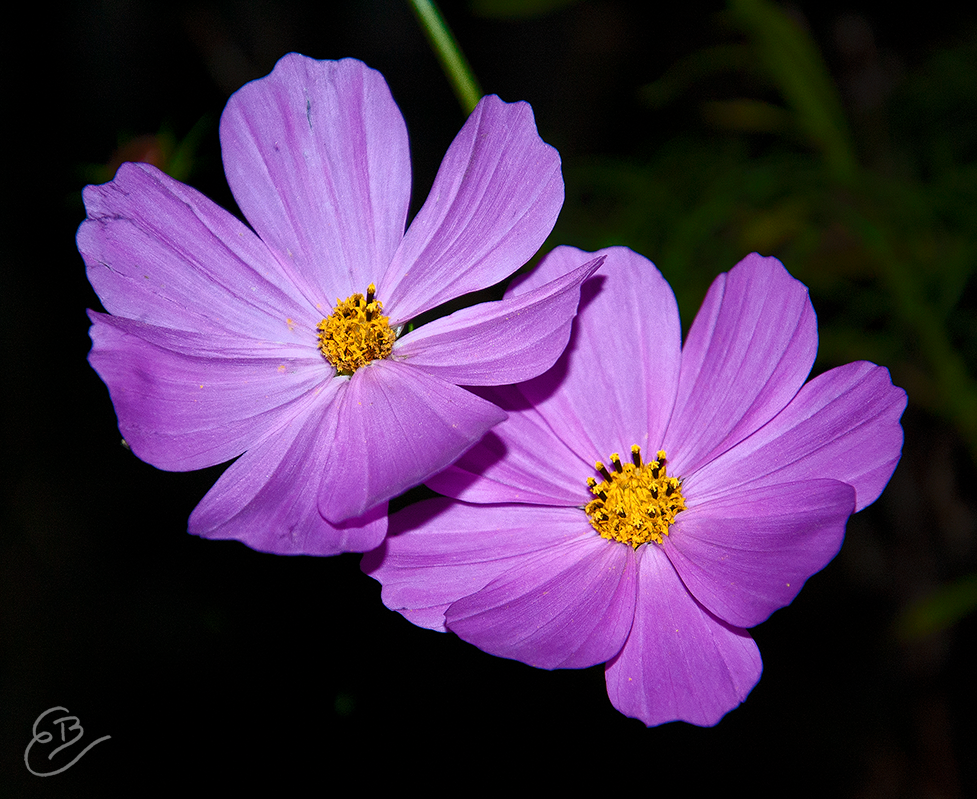
3 Dog Acres | rural Washington County, Arkansas
Image by Ebenezer | 17 September 2017
Like a New and Beautiful Song
“This lovely flower, so interesting to-day, is named from Kosmos, which means beautiful. Never was a plant more appropriately named than this stately queen of the garden, combining some many perfect qualities, tall, graceful, beautiful in flower and foliage,” Mrs. Shepherd wrote in American Gardening (8 August 1896). “Blooming at a time when other flowers are scarce, it has become the crowning glory of the garden in autumn, and is invaluable for cut flowers. When Cosmos first appeared in its sweet simplicity a few years ago, it struck the popular heart like a new and beautiful song, and each year since it has gained friends and admirers, and developed new beauty, new types and shades of color.
“When the intelligent hybridizer becomes her faithful co-worker, there will be revelations of beauty in Cosmos undreamed of to-day,” Mrs. Shepherd continued. “Indeed, there are so many beautiful combinations of shapes, shades and colors that I cannot find language to properly describe them. I predict for Cosmos a most brilliant future, that it will rank with the Chrysanthemum in use and popularity in the very near future. Its evolution into such magnificent beauty through accidental cross-fertilizing alone, is something wonderful.”

The Cosmos Craze
How prescient she was, this amazing nineteenth century woman. Today, a century and a quarter later, the showy Cosmos continues to hold gardeners in thrall. Writing for Dave's Garden, one of the country's leading online nurseries, botanist Audrey Stallsmith acknowledged “The Cosmos Craze.”
“There are fads in gardening, just as in fashion, and these days the cosmos is ‘in’ in a big way,” Ms. Stallsmith writes. “One seed company site I consulted offered over 50 different types, though most of the innovation seems to be with the bipinnatus rather than the sulphureus species. The former now comes in shades of apricot, yellow, and red and in double, semi-double, crested, and seashell forms — among others!”
Our specimens, the lonely one and the twins shown above, are old-school Cosmos diversifolius. We transform them into a private symbol of the orderly, harmonious Universe, the kind of Universe we so desire to create and to keep. We are weary of the chaos. Our Cosmos stands for beauty. One and the others are a beautiful thing.



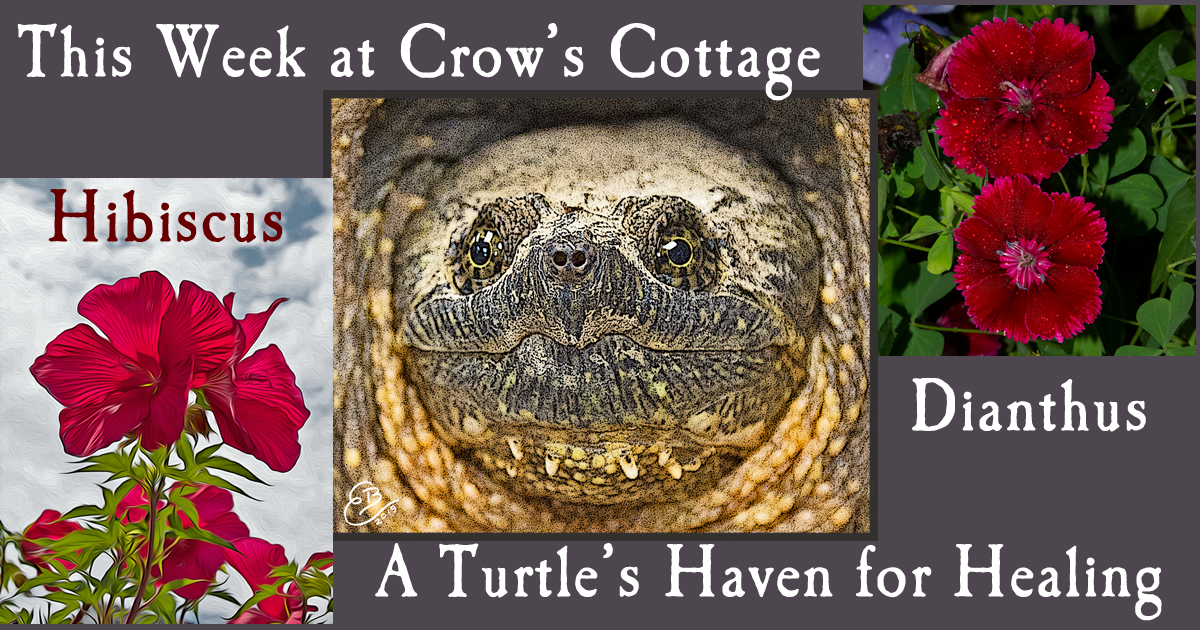

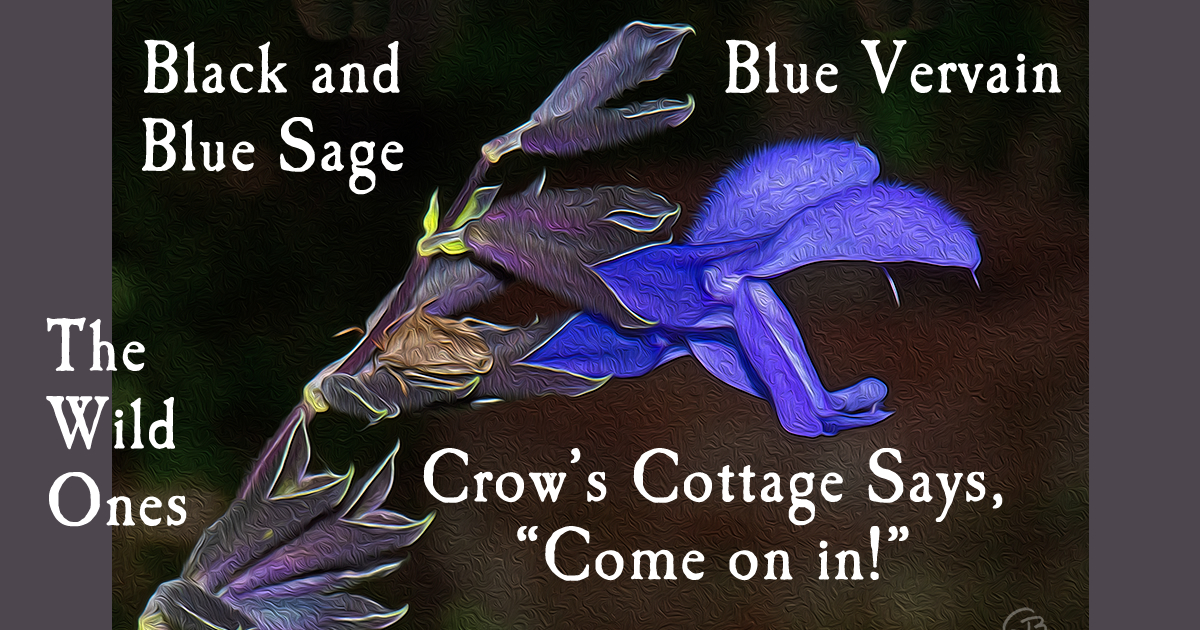

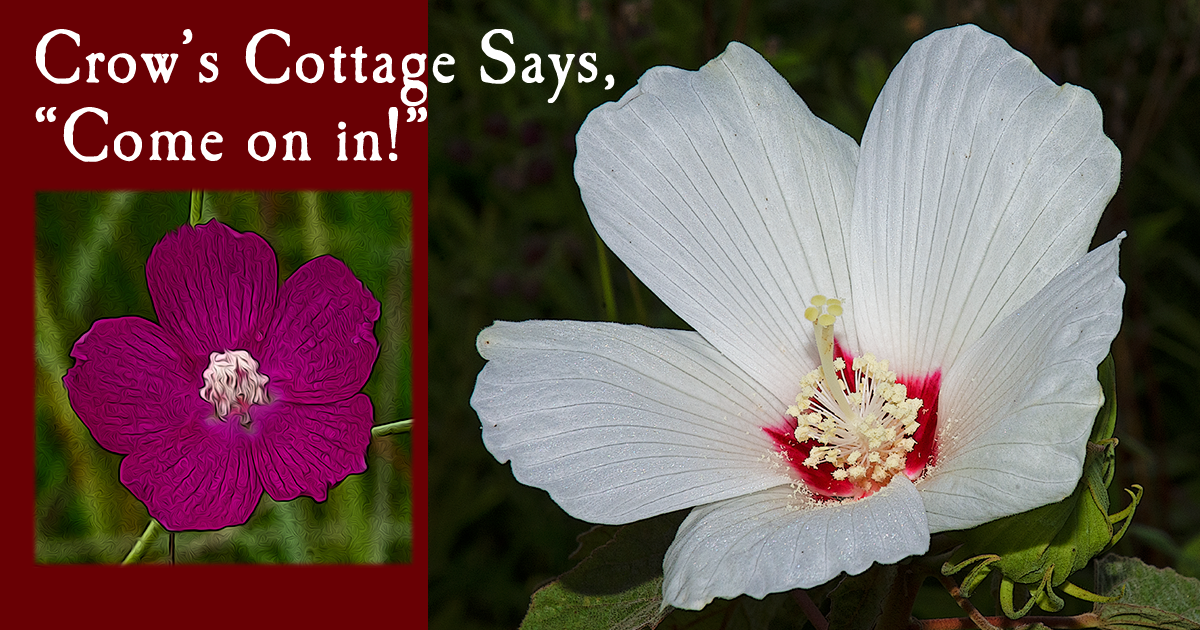

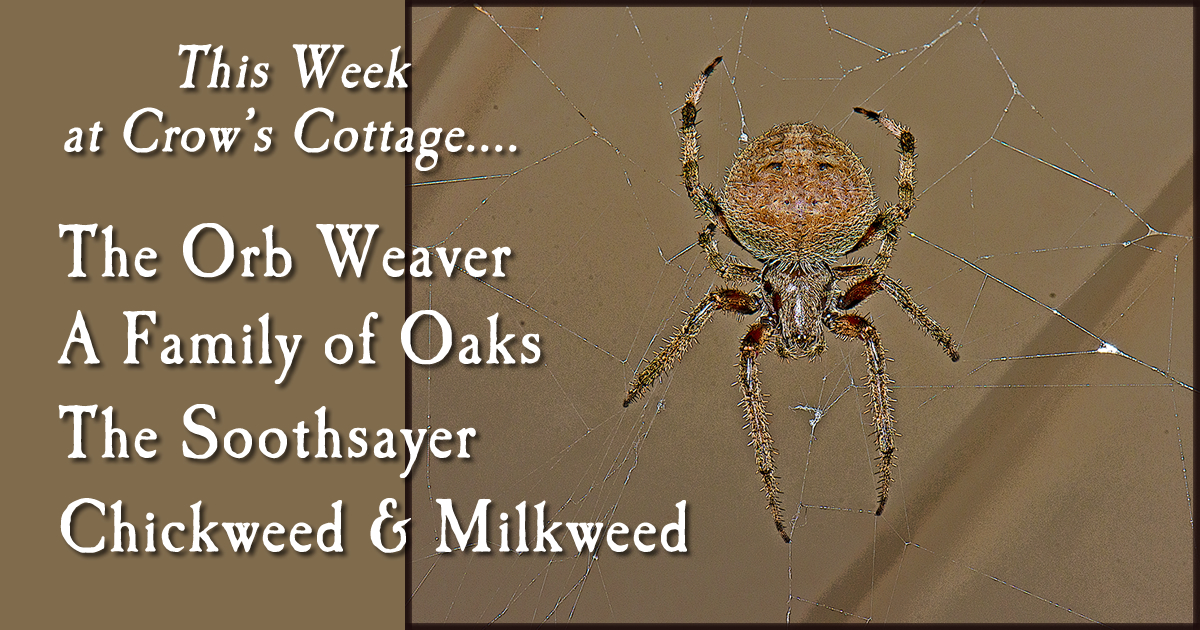



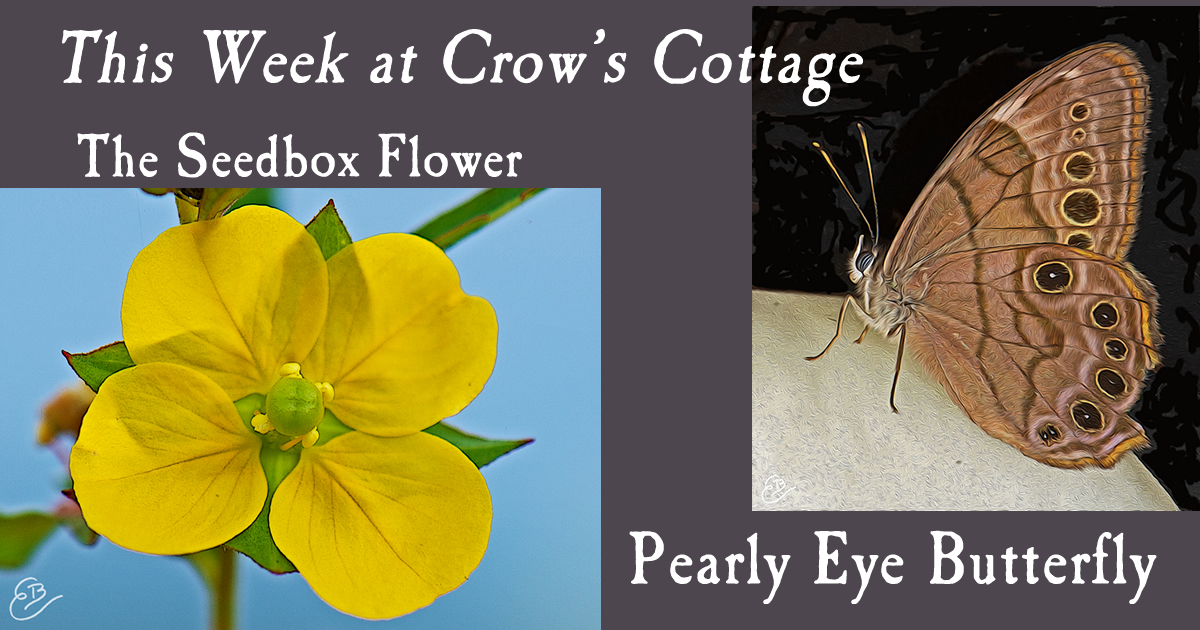
As always, we invite you to write us letter of encouragement or correction. You can even chastise us if you're respectful. Expect a courteous and timely reply. And let us know if you'd like to receive a notice about new features. Our address is ebenezer@crowscottage.com




